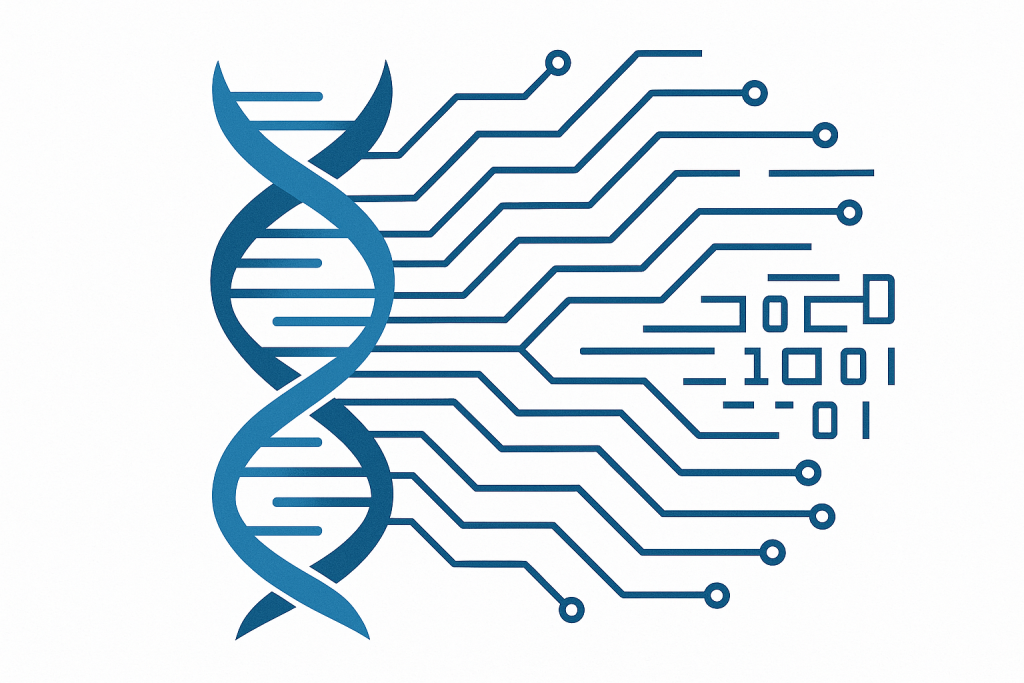The next frontier in education isn’t digital—it’s biological.
From Circuits to Cells
For decades, STEM education has centered on machines, algorithms, and engineering precision.
Students learned to master the mechanical and digital worlds — building robots, coding systems, and modeling data. But the 21st century has introduced a new layer: life itself as technology.
From gene editing to synthetic biology and AI-driven biodesign, the boundaries between biology and computing are dissolving. Students must now learn to think across both — combining biological intuition with computational logic.
This isn’t about replacing software with biology. It’s about integrating them — teaching the next generation to collaborate with living systems as both scientific tools and creative partners.
Why “Wetware” Is the Missing Piece
“Wetware” refers to biological systems — the living, adaptive processes that define life.
Just as software runs on code and hardware executes it, wetware operates on biochemical logic — DNA, proteins, and cells that store, process, and respond to information.
When we teach students how living systems make decisions, repair themselves, or evolve, they begin to see biology as an intelligent system, not just a set of facts.
Combining wetware and software in education means:
- Modeling living systems using computational tools.
- Designing experiments that merge physical observation with simulation.
- Using data to understand growth, behavior, and adaptation.
In short: students stop memorizing biology and start thinking like life does — dynamically, iteratively, and contextually.
The STEM Evolution: From Control to Collaboration
Traditional STEM has been built around control — building predictable systems that obey programmed rules.
But the living world doesn’t work that way. It grows, adapts, and sometimes resists direction. The new STEM challenge is not to command life but to collaborate with it.
This mindset shift transforms how we teach:
- Engineering → Ecosystem Design: Students design systems that cooperate with natural processes instead of replacing them.
- Coding → Co-creation: Algorithms are used to simulate growth, evolution, and feedback.
- Science → Stewardship: Students learn that innovation carries ecological and ethical responsibility.
By merging life science and computer science, students gain the ability to think in systems that live.
Learning to Design with Life
Emerging technologies are already blurring the lines between biology and computing.
Biotech labs now use AI to predict protein folding. Artists use bioengineering to grow materials instead of manufacturing them. Environmental scientists use sensor networks to model entire ecosystems.
Future-ready classrooms can reflect this integration through:
- Virtual biolabs: where students simulate experiments using digital twins of real organisms.
- Bio-coding projects: using code to model genetic networks or simulate ecological interactions.
- Interdisciplinary studios: combining biology, art, and design to prototype living materials or sustainable solutions.
These experiences teach students to see biology not as static, but as programmable, relational, and creative.
The Ethical Dimension: Teaching Responsibility with Power
As biology becomes programmable, ethics must become teachable.
Students need to understand not only what they can design, but what they should.
Questions like:
- How should we regulate AI-designed genes or synthetic life forms?
- What happens when biology becomes editable by anyone with a computer?
- How do we respect ecosystems while engineering within them?
Educating for this future means teaching responsibility as a technical skill — one as vital as coding or lab safety.
The classroom of tomorrow must produce ethical co-designers, not just innovators.
Why This Matters for Parents and Educators
Parents and educators are shaping the first generation to grow up in a bio-digital world.
These students will inherit problems — and possibilities — that demand both empathy and technical fluency. The goal isn’t just to train biologists or programmers, but to cultivate bio-computational thinkers who can bridge life and logic.
This integrated education prepares them to:
- Adapt to industries that don’t yet exist.
- Work across disciplines to solve systemic challenges.
- Innovate responsibly in an interconnected world.
The Takeaway
When wetware meets software, education stops being about what we build — and starts being about what we grow.
To thrive in a living, data-driven world, students must learn to think like both engineers and ecologists, programmers and designers, scientists and citizens.
Merging biology and computing in STEM isn’t a trend — it’s the new foundation for how we prepare young people to shape the future.
The future of STEM is alive — and it’s time to start teaching it that way.


